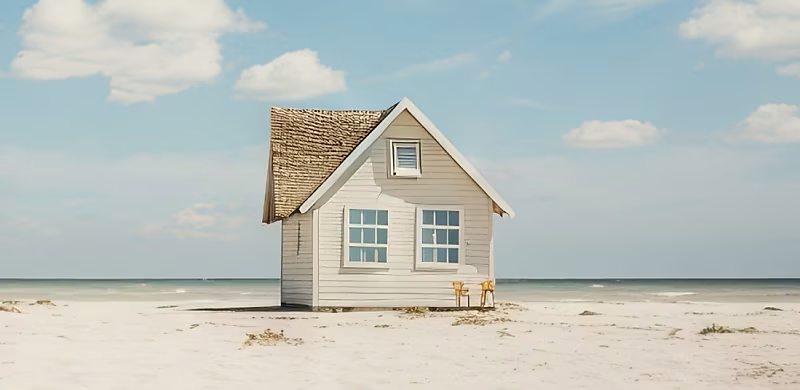Office space in Auckland’s CBD is the tightest it has been for more than 20 years, Colliers International’s latest New Zealand Research Report notes.
Auckland CBD’s office vacancy reached 5.5% in June this year – another record low. Developers that had the foresight and ability to absorb higher levels of risk and plan for this a few years ago, are now receiving strong enquiry for their premises: the majority of which are at near or full capacity.
There is some hope for tenants though, with increasing levels of supply an ongoing feature of the Auckland CBD market. More than 112,000 sq m of new space (adding 8% to existing supply) is expected to be completed over the next five years – significantly more than the past five years.
As tenants move to new premises, the space left behind needs to be absorbed. Also, all new space is unlikely to reach full commitment on delivery date. A significant pipeline in the city fringe will also assist those looking for new workplaces that do not mind opting out of a CBD address.
From this viewpoint, Colliers expects vacancy rates have bottomed out this cycle. From now until late 2019, we forecast CBD vacant space to increase by 48% from 80,000 sq m to 118,500 sq m.
Although the market is on the cusp of change (as supply will outpace demand in the short-term), it needs to be kept in context.
The increase in space from such low availability will insulate the market from a significant shift from a landlord to a tenant favourable market. Colliers projects overall vacancy to increase from 5.5% to 7.5% by mid-2020, before slowly reducing again.
Unfortunately for tenants, this new cycle is more about keeping pace with the pent-up demand of old rather than servicing future growth. Tenants decanting from high quality premises to new state-of-the-art premises may not release the right opportunities for all other tenants. Neither will all new-build opportunities.
There needs to be a readiness from tenants for the new cycle ahead as landlords are unlikely to have to reduce their rates markedly over the next few years. However, a reaction to the injection of new supply will likely be face rental growth stalling in 2019 and incentives increasing. It is likely that the well-known, large, long-lease taking tenants will be able to negotiate the best deals in a slightly bullish landlord sector.
Cold comfort
For small to medium-sized businesses in Auckland, this news will be of little comfort. While some abatement in rents in 2019 may assist in the short-term, competition amongst all other tenants eyeing opportunities at the same time is not ideal from a bargaining viewpoint.
It provides only a short window of opportunity in a highly competitive situation. This new cycle will not be the answer for those looking to maximise on rental costs, especially those that take too long to decide on their future.
In order to save on rental costs, picking the market turn in a highly competitive market can be a complex strategy. An increasingly common approach by tenants currently experiencing net face rental increases of 6% pa is to focus on maximising their current workspace ratios.
It’s better to ‘sweat the asset’ rather than staff. Recent examples are Meredith Connell and BDO, who reduced space and the number of floors while moving into new, higher rent per square metre office space.
This has been a strategy employed overseas for a number of years, but only by a few here. The ability to maximise on density – while still providing tenants with an authentic, agile and flexible workspace – is the key to unlocking a better bottom line and a happier and more productive business.
Office property market
The difficulty at the moment for prospective purchasers is locating properties to purchase. Investors, owner-occupiers and syndicators are all very active. This has seen competitive pricing when stock does become available.
While some view the new price levels as ‘untenable’, the fear of missing out (FOMO) is promoting greater levels of acceptance, facilitating a new wave of asset appreciation.
Colliers is also seeing purchaser enquiry for lower quality premises increasing, especially for properties that could benefit from some capital expenditure.
Investors are also facing the ‘there is no alternative’ (TINA) conundrum. Recent expectations of interest rates to stay low – and potential to move lower depending on how bank margins react – will see further pressure on purchasers to step up their pricing levels.
Industrial property market
Colliers recently updated its Auckland industrial development table, which shows a healthily pipeline of construction activity. With vacancy at record lows, this will alleviate pressure, but only fractionally.
The company estimates an additional 600,000 sq m of space will be constructed over the next five years, having seen a strong increase in the number of building consents issued over the past 12 months. The majority of the new builds over the next two years will be in the former Territorial Authority area of Manukau City.
Despite the increase in space, Colliers forecasts vacancy rates to remain low as a result of positive employment forecasts in a sector that is in expansion mode. According to the June 2016 BNZ-Business NZ Performance of Manufacturing Index a rate of 57.7 was recorded. (above 50.0 indicates that manufacturing is generally expanding). The survey indicates that the sector has been in expansion in almost all months since October 2012, which correlates with our demand surveys.
Retail property market
Auckland and Wellington CBD retail vacancy rates increased over the past year despite high levels of leasing activity. But not all is as it seems.
Auckland’s 2.7% CBD vacancy rate is up from 2.5% last year. However, the amount of vacant retail space available is the lowest recorded since late 2007 with less than 3,030 sq m.
The key reason for this anomaly is the demolition of the Downtown Shopping Centre to make way for 100 new shops by October 2018. Total CBD supply has reduced by approximately 10% while construction work takes place. This has seen pressure on other pockets of vacant space in the CBD, as many of the tenants have moved out of the centre and into the streets.
Wellington’s 8.9% CBD vacancy rate is up from 8.3% a year ago. However, less than 150 sq m of additional vacant space is available. Similar to Auckland, the supply of space has reduced to make way for new tenants. Approximately 6,400 sq m of retail space (at the time of the June survey) was being prepared for David Jones (opened on the 28th of July).
The outlook for both the Auckland and Wellington CBD retail sectors is positive (from a landlord perspective). Demand will continue to outpace current availability leading to further potential for rental gains. Over the medium-term, new supply will assist alleviate some demand pressures.



